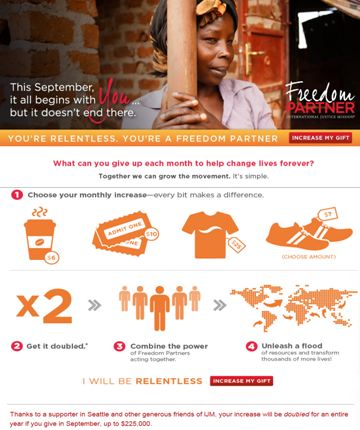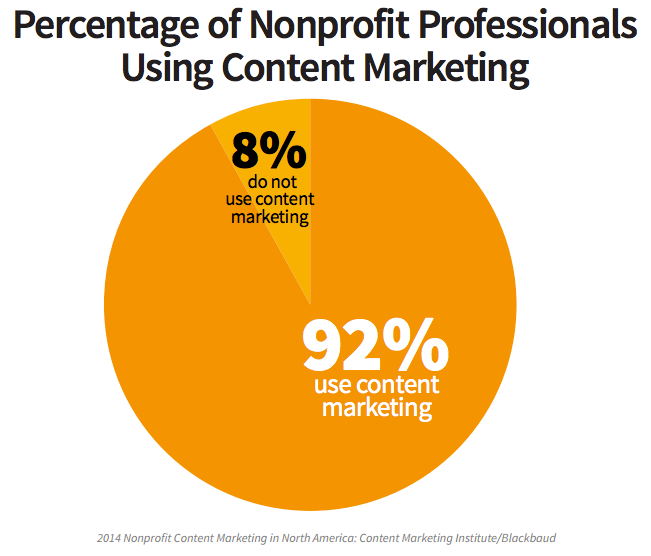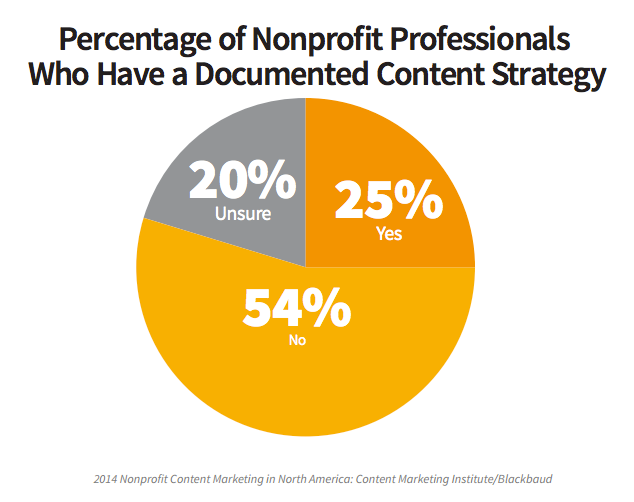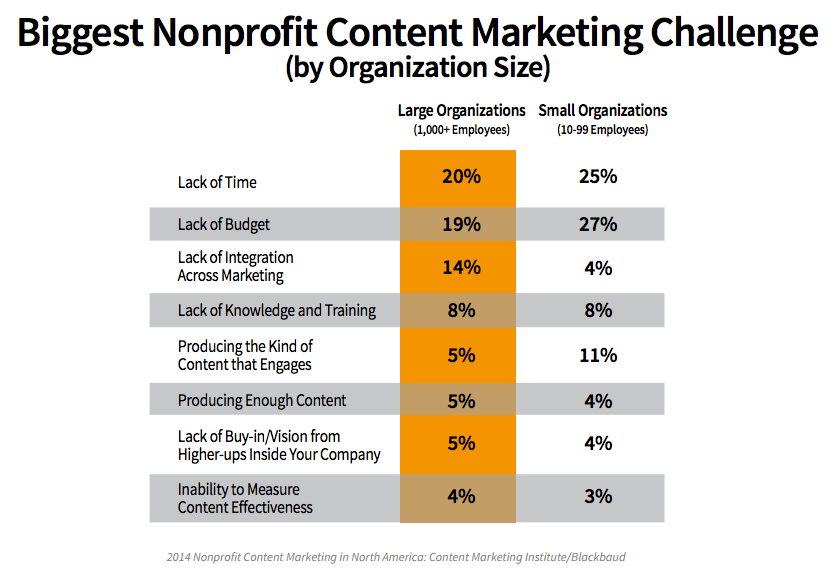The Disasters Emergency Committee (DEC) is using the mobile engagement solution provider OpenMarket to drive mobile fundraising for its Philippines Typhoon Appeal.
Latest news, tools, ideas and links for digital fundraising and campaigns by charities and non-profits. Blog researched by a Professional Digital Marketer working full time in the Third Sector.
The Disasters Emergency Committee (DEC) is using the mobile engagement solution provider OpenMarket to drive mobile fundraising for its Philippines Typhoon Appeal.
British Red Cross has launched a new digital fundraising initiative, 'Give to a Special Project' which gives supporters the chance to directly fund a diverse range of international and UK projects ranging between £1,000 and £8,000 in value.
Core Telecom has announced the latest milestone in its continued support of children's charity, Dreams & Wishes, as over £200 is raised as part of an SMS fundraising service.
This offer is designed to help registered UK charities reduce organisational costs whilst increasing efficiency, accessibility and collaboration within their organisation.
The Beano has partnered with Digital Giving's fund raising initiative T-Shirt Booth in order to help raise support for Yellowball Foundation.
Check out this infographic from the Access Group which looks at how 100 key personnel in charities think finance software is being used across the UK.
The technology was donated by Outdoor Media Centre and Missing People is able to control the campaign through its own headquarters.
1. American Diabetes Association
Because 1 in 12 Americans have diabetes.
Facebook || Twitter || YouTube || Google+ || LinkedIn || Flickr
2. Americans for the Arts
Because without art our children’s minds will not grow to comprehend life beyond the obvious.
Facebook || Twitter || YouTube || LinkedIn || Flickr
3. American Society for the Prevention of Cruelty to Animals (ASPCA)
Because 3-4 million cats and dogs are euthanized each year in America.
Facebook || Twitter || YouTube || Flickr
4. American Red Cross
Because they are always the first to arrive on the scene after a natural disaster.
Facebook || Twitter || YouTube || Google+ || LinkedIn || Flickr
5. Amnesty International
Because in a global society all our human rights need to be fought for and protected.
Facebook || Twitter || YouTube || Google+ || LinkedIn || Flickr
6. Coalition to Stop Gun Violence
Because 9 American children and 75 American adults die everyday from gun violence.
Facebook || Twitter || YouTube || Flickr
7. Communities in Schools
Because America ranks 14th in reading, 17th in science, and 25th in math.
Facebook || Twitter || YouTube
8. Court Appointed Special Advocates (CASA)
Because 700,000+ American children need advocates in our judicial system each year.
Facebook || Twitter || YouTube
9. Darkness to Light
Because 1 of every 4 girls and 1 every 6 boys in the U.S. will be sexually abused by the age of 18.
Facebook || Twitter || YouTube
10. Electronic Frontier Foundation
Because they defend our civil liberties in a digital world.
Facebook || Twitter || YouTube
11. Families USA
Because access to health care should be a right, not a privildege.
Facebook || Twitter || YouTube
12. FarmAid
Because family farms are good for America.
Facebook || Twitter|| YouTube || Flickr
13. Feeding America
Because poverty and food insecurity is at record highs in the United States.
Facebook || Twitter || YouTube || Google+ || LinkedIn || Flickr
14. Habitat for Humanity
Because all Americans deserve a safe, warm home.
Facebook || Twitter || YouTube || Flickr
15. Humane Society of the United States
Because factory farming, fur farming, puppy mills, and lab research on animals is cruel.
Facebook || Twitter || Google+ || LinkedIn || YouTube || Flickr
16. Human Rights Campaign
Because all American men (and women!) are born free and equal.
Facebook || Twitter || YouTube || Google+ || LinkedIn
17. Interfaith Alliance
Because freedom of religion is a constitutionally guaranteed right under the First Amendment.
Facebook || Twitter || YouTube || LinkedIn || Flickr
18. It Gets Better Project
Because life begins after high school and it really does get better.
Facebook || Twitter || YouTube || Google+ || LinkedIn
19. Iraq and Afghanistan Veterans of America
Because our veterans have earned their benefits and the right to a better life after the battlefield.
Facebook || Twitter || YouTube || LinkedIn || Flickr
20. Local Harvest
Because they make it easy to find your local farmer’s markets and organic food producers.
Facebook || Twitter
21. Malaria No More
Because it is good to be reminded how fortunate we really are and how little it takes to save a life.
Facebook || Twitter || YouTube || Flickr
22. Maplight.org
Because they expose which of our politicians have been bought and sold to special interests.
Facebook || Twitter || YouTube
23. Moms Rising
Because the U.S. is the only developed nation in the world without paid maternity leave.
Facebook || Twitter || YouTube || Google+ || Flickr
24. National Anti-Vivisection Society
Because you can judge a nation by how it treats their animals.
Facebook || Twitter || Flickr
25. National Campaign to Prevent Teenage Pregnancy
Because 3 in 10 girls in the United States get pregnant at least once by age 20.
Facebook || Twitter || YouTube || Flickr
26. National Coalition for the Homeless
Because veterans, the unemployed, and the mentally ill should not be living in the streets.
Facebook || Twitter || YouTube || Flickr
27. National Geographic Society
Because they expand our view of our world and the cosmos.
Facebook || Twitter || YouTube || Google+ || LinkedIn || Flickr
28. National Organization of Women (NOW)
Because even in the 21st Century women still need to fight for equal rights.
Facebook || Twitter || YouTube || LinkedIn || Flickr
29. National Priorities Project
Because they make it easy for Americans to understand how our taxes dollars are spent.
Facebook || Twitter || Google+ || LinkedIn || YouTube
30. National Parks Conservation Association
Because our national parks are our greatest national treasure.
Facebook || Twitter || YouTube || Google+ || LinkedIn
31. National Public Radio (NPR)
Because the corporate control of our media is a great threat to our democracy.
Facebook || Twitter || YouTube || Google+ || LinkedIn || Flickr
32. National Wildlife Federation
Because we must save our wildlife and our wild lands for future generations.
Facebook || Twitter || YouTube || Google+ || LinkedIn || Flickr
33. Natural Resouces Defense Council (NRDC)
Because they inspire us to take action and lobby for Mother Nature on Capitol Hill.
Facebook || Twitter || YouTube || Google+ || Flickr
34. Obesity Society
Because 50% of Americans will be obese by 2030.
Facebook || Twitter
35. Oceana
Because our oceans need to be protected from overfishing and pollution.
Facebook || Twitter || YouTube
36. People for the Ethical Treatment of Animals (Peta)
Because if they don’t raise a ruckus to expose animal cruelty, then who will?
Facebook || Twitter || YouTube || Google+ || LinkedIn || Flickr
37. Polaris Project
Because at this very moment 100,000 minors are being trafficked for sex in the United States.
Facebook || Twitter || YouTube || LinkedIn
38. Public Broadcasting Service (PBS)
Because the corporate control of our media is a great threat to our democracy.
Facebook || Twitter || YouTube || Google+ || LinkedIn || Flickr
39. Public Citizen
Because they hold corporations accountable and make us more conscious consumers.
Facebook || Twitter || YouTube || LinkedIn || Flickr
40. Rape, Abuse & Incest National Network (RAINN)
Because 15 of 16 rapists will never spend a day in jail and that’s just not right.
Facebook || Twitter || YouTube
41. Share Our Strength
Because no child should go hungry in America.
Facebook || Twitter || Google+ || LinkedIn || YouTube || Flickr
42. Stand Up to Cancer (SU2C)
Because the best way to beat cancer is to fight it.
Facebook || Twitter || YouTube || Google+ || Flickr
43. Repower America
Because the future of our economy and our national security depends upon it.
Facebook || Twitter || YouTube || Flickr
44. Sea Shepherd Conservation Society
Because they fight to save our beloved whales, dolphins, and seals from slaughter.
Facebook || Twitter || YouTube || Google+ || LinkedIn || Flickr
45. Southern Poverty Law Center
Because hate, bigotry, and intolerance continue to thwart and undermine the American Dream.
Facebook || Twitter || YouTube || Google+
46. Special Olympics
Because having a disability doesn’t mean a person can’t learn, live, love, and succeed.
Facebook || Twitter || YouTube || LinkedIn
47. St. Jude Children’s Research Hospital
Because all children – insured or not – deserve the right to fight dying from cancer.
Facebook || Twitter || YouTube || Google+ || LinkedIn
48. Student Aid Alliance
Because a good education should be a right, not a privildege.
Facebook || Twitter || YouTube
49. World Wildlife Fund
Because without them tigers, rhinos, and polar bears will go extinct in our lifetime.
Facebook || Twitter || YouTube || Google+ || LinkedIn || Flickr
50. Water.org
Because it’s good to be reminded that Americans take for granted our access to clean water.
Facebook || Twitter || YouTube || Google+ || LinkedIn || Flickr
 This post was first published on Third Sector Today.
This post was first published on Third Sector Today.
As a fundraiser, you pour your heart and soul into preparing the year-end campaign, but by the time the champagne has popped, the new year is off to the races before you have time to catch your breath.
If this sounds all too familiar, you're not alone. We've all been there. You invest heavily in the planning phase, often (err, hopefully) as early as August, but by the time January arrives you want to count the dollars, share the stories, and congratulate donors on another successful year.
However, January is exactly the time to strike. That may sound cold, if not ruthless, but you're a fundraiser first. And, as a fundraiser, you seize the opportunity to build donor loyalty.
Following the season of giving and the good will achieved, the best opportunity to build donor loyalty is by introducing your monthly giving program. Sure, it may be a tough pill to swallow, following up the holiday season with an additional ask is not easy, but every organization needs a Beginning-of-Year (BOY) strategy that focuses on smaller, one-time contributions.
A BOY strategy that focuses on the value of your monthly giving program demonstrates the impact a dedicated group of donors can have on your organization. Secondly, the donor and organizational benefits are critical to establishing a long-term relationship with your donors.
It's no surprise that nonprofits are investing heavily in monthly giving programs. In fact, the 2013 Online Benchmark Report reported monthly giving revenue increased 27 percent in 2012 over 2011. Growth in the number of monthly donations as a percentage of total donations also increased from the previous year.
Simply put, if you want to increase the lifetime value of your supporters, create a recurring giving program. Joanne Fritz's summary of Monthly Giving: The Sleeping Giant provides some great pointers to getting a recurring program off the ground. However, the beginning of the year is the ideal time to take your established recurring giving program and capitalize on the year-end support.
Here are three steps to optimizing a BOY strategy utilizing your recurring giving program.
 International Justice Mission is one organization who has successfully launched a sustainer campaign to upgrade Freedom Partner sustainers. Though its annual campaign occurs in September, the lessons can be applied to a BOY strategy to acquire and upgrade recurring donors.
International Justice Mission is one organization who has successfully launched a sustainer campaign to upgrade Freedom Partner sustainers. Though its annual campaign occurs in September, the lessons can be applied to a BOY strategy to acquire and upgrade recurring donors.
There are three things that the campaign does exceptionally well, they include –
The results were outstanding; open rates for the emails average approximately 30 percent while overall response rate for the campaign was greater than four percent. However, what was even more impressive was the Freedom Partner average monthly increase was $35.
Whether you're BOY strategy focuses on converting one-time donors to sustainers and/ or upgrading existing monthly donors, don't let January speed by – create a BOY strategy today to build loyalty with your supporters.

Here’s an amazingly simple (and free) way to discover topics that your Facebook fans like to talk about the most.
Insights will tell you which posts are performing best, but it’s up to you to figure out how to repeat this performance. One way to get started on the right path is to create a word cloud of your top posts.
As Christmas approaches, the time of giving, people are digging deep in to their pockets and donating to charity. Follow these seven steps to increase online donations this Christmas.
Bidtech's silent auction technology allows guests to bid for auction items via technology on the Apple iPad.

This a a guest post by my good friend, Frank Barry, Director of Digital Marketing at Blackbaud Follow Frank on Twitter.
————
We live in the information age – people have all the info they need at their fingertips and Google has trained us to find anything we need by doing a simple search.
Your potential donors are searching. Volunteers are searching. Funders are searching. Patients are searching. Parents are searching. Those who would benefit from your programs and services are searching. Everyone is searching.
We also live in the information overload age – meaning there is more information being fed to us than ever before and there’s no chance of us making sense of it all. Which means we have to be selective. We find the sources of information we like and trust. Then we stick with those, ignoring others.
That's why great content (aka Epic Content according to Joe Pulizzi) is so important and content marketing is the key to being found and capturing the attention of those you need to reach.

That sounds like a huge number, but keep in mind content marketing has been around since at least 1895 when John Deere launched a magazine titled "The Furrow", providing information to farmers on how to become more profitable.
According to Wikipedia content marketing is any marketing format that involves the creation and sharing of media and publishing content in order to acquire customers (or donors, volunteers, advocates, etc. – inserted by me). This information can be presented in a variety of formats, including news, video, white papers, e-books, infographics, case studies, how-to guides, question and answer articles, photos, etc.
With that definition it makes sense that 92% of nonprofits surveyed in the first ever nonprofit content marketing report said they're using content marketing. Nonprofits have been creating content to engage constituent and acquire new supports for as long as the charitable sector has been around.
But we also have to keep in mind that the world is changing every day. It's getting harder to connect with those who would love to support your cause. "Nonprofits are turning to?content marketing because 'spray & pray'?mass marketing isn’t working for them." According to Kivi Leroux Miller (@kivilm), President of the Nonprofit Marketing Guide.
Ultimately, the real question is if using content marketing is helping to advance your mission?

This is where the rubber meets the road.
Many nonprofit organizations lack a documented content strategy to guide their efforts. Yet it's clear that those who do document their strategy are far more effective than those who do not. 52% of those with a documented content strategy rate themselves highly in terms of effectiveness, compared with 14% of those without a documented strategy.
According to the Content Marketing Institute this is similar to what they've observed in their research on both business-to-business (B2B) and business-to-consumer (B2C) companies.
Those organizations that take the time to think through, plan and document how they're going to use great content to educate and engage in order to advance their mission have a leg up on the rest. Without this type of planning it's likely you're spinning your wheels and wasting valuable resources.

Ok, maybe this one isn't "shocking".
Finding the time and the money to do most anything can be difficult for nonprofits that are watching every penny and doing their absolute best to make an impact. But it's important. And there are ways to alleviate the pain.
Joe Pulizzi (@JoePulizzi), Founder of the Content Marketing Institute, suggests "nonprofits without many resources should focus on delivering?consistent content by owning just one?channel. Be the go-to resource!" The idea is simple yet highly effective – pick one place and focus all your time and attention on it. Be the most helpful. Be the most engaging. Be the most fun. Be the best!
Once you've determined that the time and effort is worth it and mastered one channel, move to the next one. Slowly but surely you'll build your expertise, capacity and ability to expand.
Make sure to download the full report and check out the infographic.
What's your take? Is content important?
Social Misfits Media has teamed up with Aegis Media to launch a new free online social media guide for charities, 'Something to Tweet About', which looks specifically at content creation and distribution.
Nudge Digital is encouraging charities to apply for its competition which will provide the winner with a free website worth £10,000.
A recent survey by Connect Assist found that less than 20% of charities effectively engage with supporters digitally. Check out this infographic which explores the areas charities are missing out on.
I leave to go home for 10 days today.
I’m a mix of emotions. Partly because I KNOW I’ve forgotten to do something, bring something, or lock something. And also because I’m the middle child of three girls, and..well..nothing comes without a shot of drama. Admittedly, I’m probably the cause of most of it (sorry, mom). #middlechildsyndrome
But truthfully..
It’s because homecomings, as wonderful as they are, always throw me off a little. They’re a reminder of what I’m missing as I’m venturing out on my own. There’s no place like home, and no amount of heel-clicking can take me back to Memphis, TN on the days I miss it most. So, I treasure these moments with family and I carry them with me. Drama and all. And I’m thankful beyond measure that they’re my home.
But I get to come back here, to my work with the industry that’s impacting lives daily, and again I’m thankful – thankful for you and the work that you do. This roundup compiles a few thoughts, fundraising ideas, and instructions to keep you doing, growing, changing, and saving for good.
I hope you have much to be thankful for this week.
Yours truly,
It's December and that can only mean one thing: the end of year fundraising campaign is in full swing! Arts and cultural organizations are not exempt from the excitement and are competing with other nonprofits for donor dollars.
How do you convince someone to donate to your arts organization? How do you demonstrate tangible impact so they don't think of you as a form of entertainment but rather as an essential part of the community? We asked ourselves that question and did some research for you. Check out our latest infographic below on the impact a donation to an arts organization makes on the local community.
By Lawrence Henze
Story original seen in Philanthropy Journal.
For most nonprofits, colleges and universities, giving significantly increases around the end of the calendar year in conjunction with the late fall and early winter holiday season.
Personally, because I prefer to analyze rather than follow trends, most of my giving is earlier in the calendar year in my dual effort to ease the processing burden on my favorite organizations and to recognize that I will need the extra time because I will be hopelessly behind in holiday shopping!
MUSING #1: OOPS!
At the beginning of the calendar year – perhaps in response to a screening project – you segmented your database and identified your top major and planned giving prospects for personal cultivation and solicitation. And, for reasons that now seem questionable, at that time you decided to remove the assigned prospects from the normal annual giving or membership solicitations.
Now it is October, many of your best prospects have not been solicited to give at all this calendar year, and not surprisingly, giving from your best prospects is lagging. What should you do?
Musing #2: CASH IS KING, BUT SECESSION PLANNING IS NECESSARY
I am not sure what the title of this musing means either (and I created it), but I am trying to impart the importance of planned giving messaging in your end-of-year appeals. Did that help?
Analytical data suggests that, for most nonprofit and educational institutions, as many as 10 to 50 percent of your constituents are most likely to make their largest gift in the form of a planned gift. You may ask, as many do, "Why do we not receive more planned gifts if that is true?" My response would be threefold: You do not ask, you do not ask the right prospects, and when you ask, it is very passive!
If you have not recently screened your database to identify planned gift prospects, plan to do so in the near future. For this year, focus on your loyal, low dollar-amount donors above the age of 45 and include a "P.S." in the solicitation letter referencing the opportunity to make a planned gift. Or include a thank-you insert after they make their year-end gift. Or both!
And next year, include a comprehensive planned giving marketing effort in conjunction with personal cultivation and solicitation of planned gift prospects.
Musing #3: BE THE DONOR, A PHILANTHROPIC VISUALIZATION TECHNIQUE!
Slowly, yet without huge momentum, the nonprofit industry is switching to a more donor-centered approach. I say "slowly" in a very thoughtful manner. In spite of significant evidence from the donor community at large, and our donors in particular, we stick with "time-honored" practices that are behind the times and losing some of their honor.
In other words, we solicit too frequently, we fail to integrate all outbound communications to demonstrate a cohesive strategy, and we miss opportunities to further engage our donors.
It may be too late to implement many of the following suggestions this year, so for 2014 let us resolve to:
Have a happy and successful end of year!
Lawrence Henze, managing director of Target Analytics, has extensive experience in fundraising, market research and the application of predictive modeling services to the nonprofit marketplace. The founder of Core Data Services, which Blackbaud acquired in 2001, he has also served as vice president of predictive modeling services at USA Group Noel Levitz and president of The Philanthropic Division of Econometrics, Inc. Henze has 15 years of experience in development, raising more than $125 million, primarily for higher education institutions.
Head of IT Andrew Brenson said: "We wanted to move to a more automated, offsite backup solution but had a number of specific requirements."
The use of social media among charity CEOs is on the rise. Here are five top qualities which make for a successful social media presence.
In under six hours, mental health charity Mind received a donation of £25,000 from Asda after a supporter of the charity complained about a 'mental patient' Halloween costume.
Note: This is the sixth in a series of posts about the Nonprofit Web Design Process. See the end of this post for a linked index of other posts in the series.
A persona is a fictional representation of one of your constituents. When they're based on solid user research, personas can be great tools for helping your design team and internal stakeholders truly understand your audiences.
Purposes for personas include:
When we create personas for a nonprofit, we try to limit the number to 5 or 6. Each persona should be representative of one audience group for your organization. Even though personas have different demographic descriptions, the key factor that differentiates one persona from the next is what the person needs from your organization. So, if you have a 65-year-old male and a 26-year-old female that are both looking for ways to volunteer with your organization, you only have one persona: a volunteer.
For each persona, I typically include:
Also, going back to the research, each descriptor I use would ideally be based on something I learned during the user research phase – an interview response, analytics data, survey data or something else that's real and tangible.
I deliver personas either as Word Documents or PowerPoint slides. There are typically a couple of rounds of revisions before we arrive at a final product. Here are some personas I recently developed with a client:
The final step in the persona development process is to socialize the personas around your organization. Printing them out and laminating them is a good start. A colleague recently shared this blog post from MailChimp with me that showed some amazing posters they designed to show off their personas. Whatever method you use, be sure that folks get excited about them. These personas will be your friends as you write and revise content, plan your email campaigns and optimize your website.
Next month, we'll move on from User Research into Content Strategy. I like to think of Content Strategy is "where the rubber meets the road" in our design process since we get to take everything we learned during Discovery and User Research and start making actionable recommendations. Get excited!